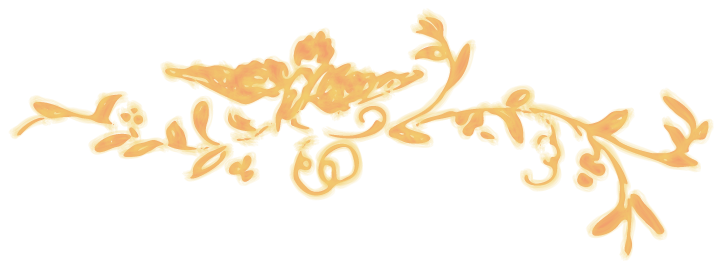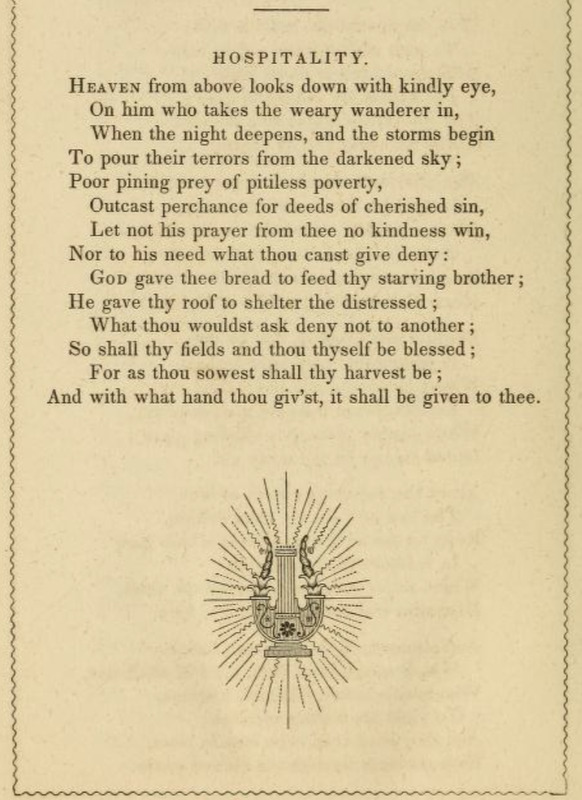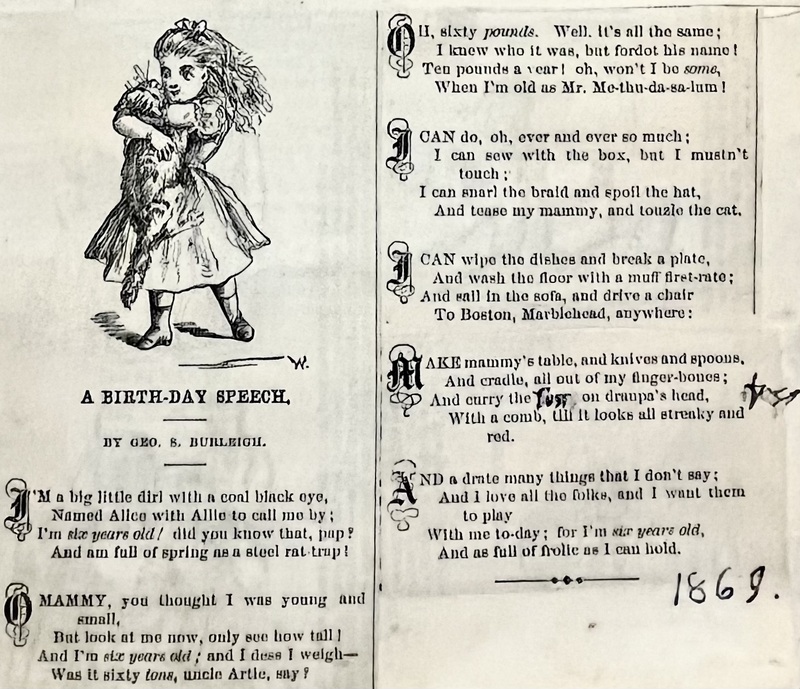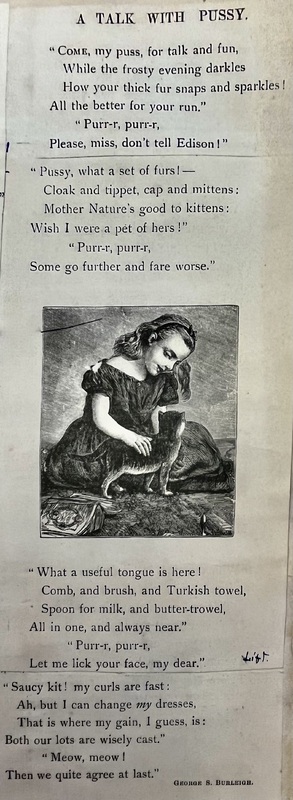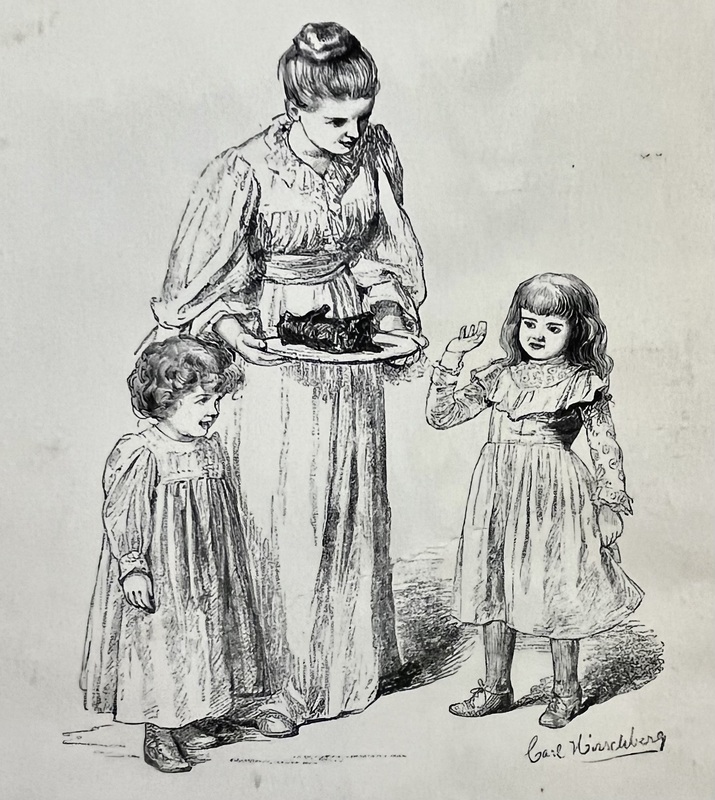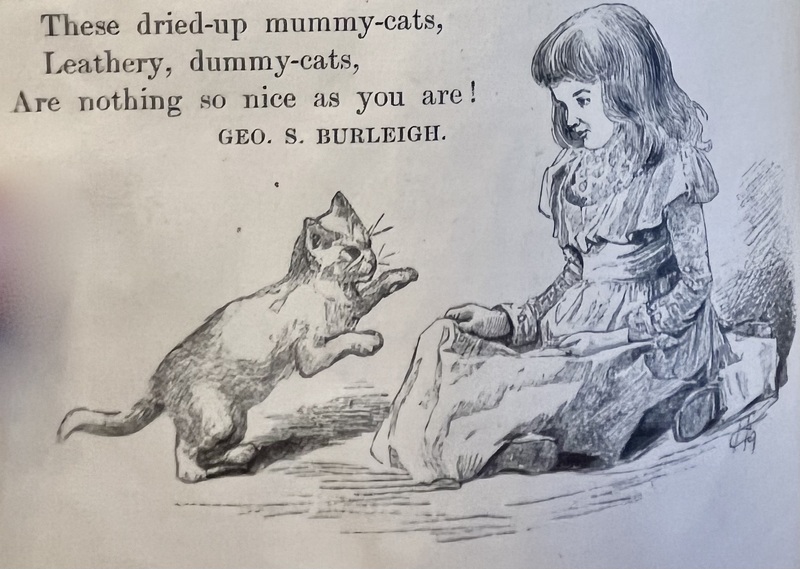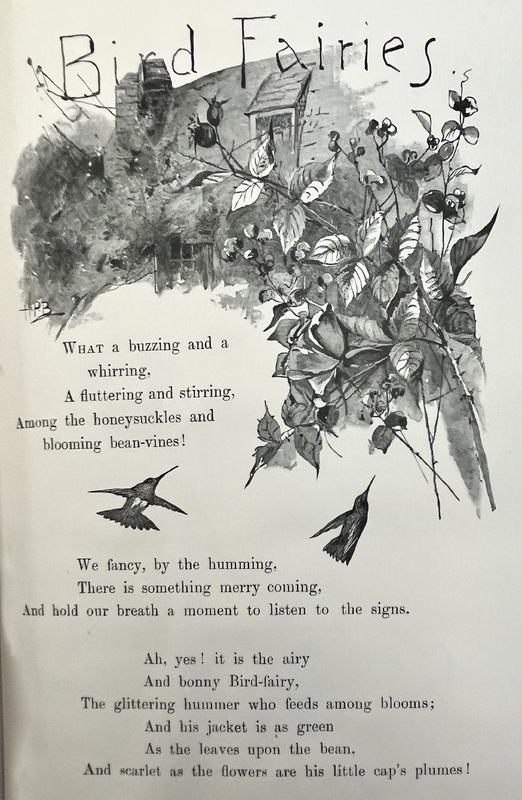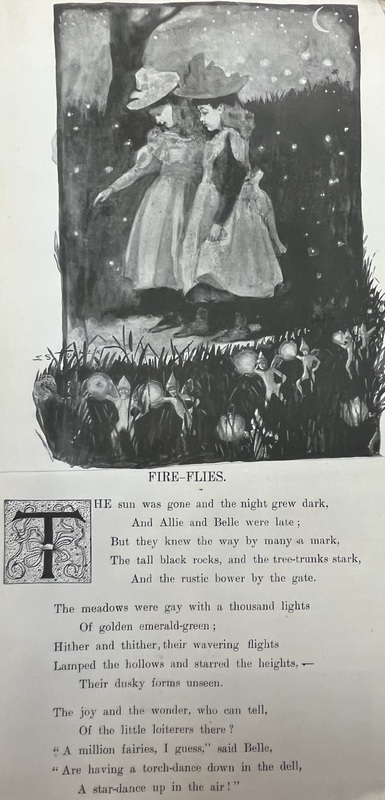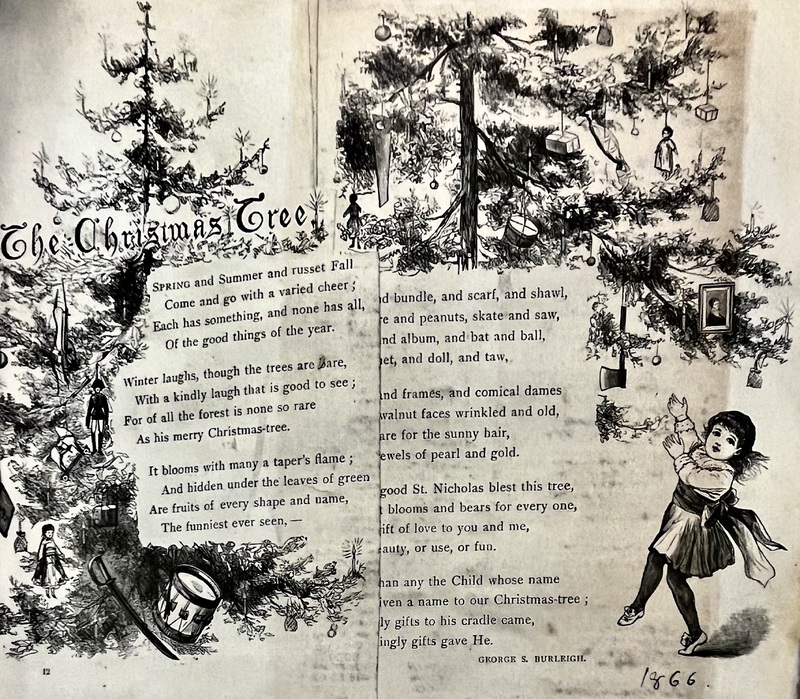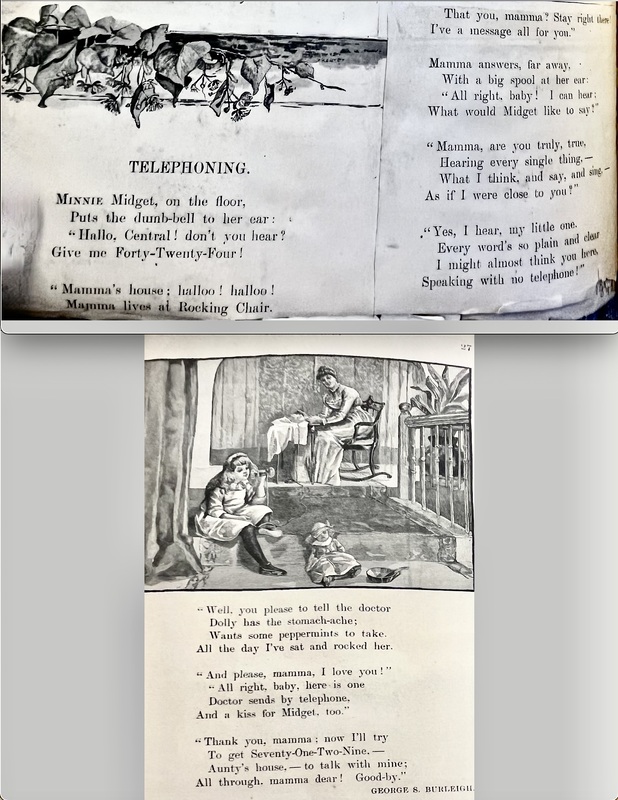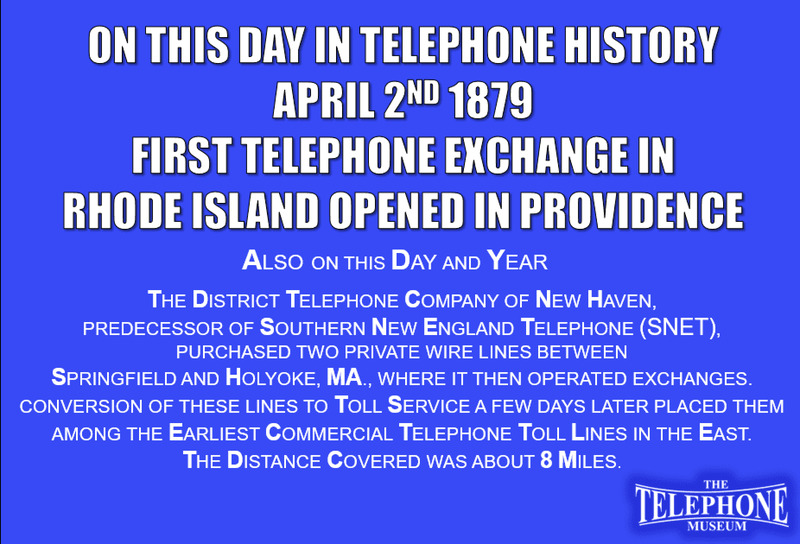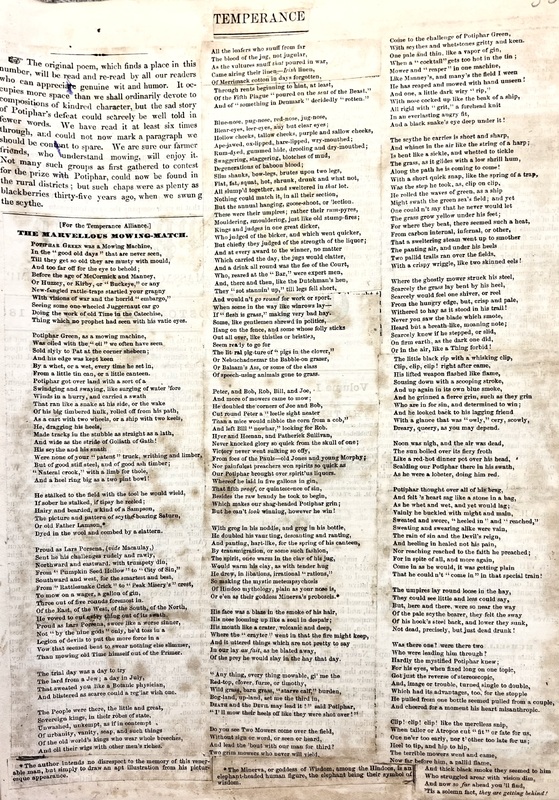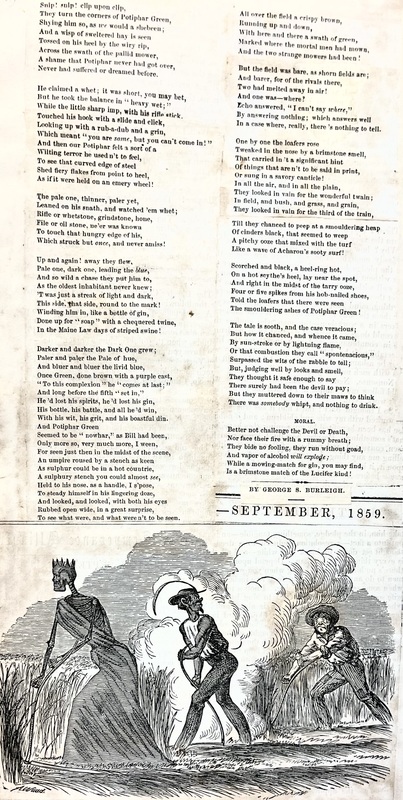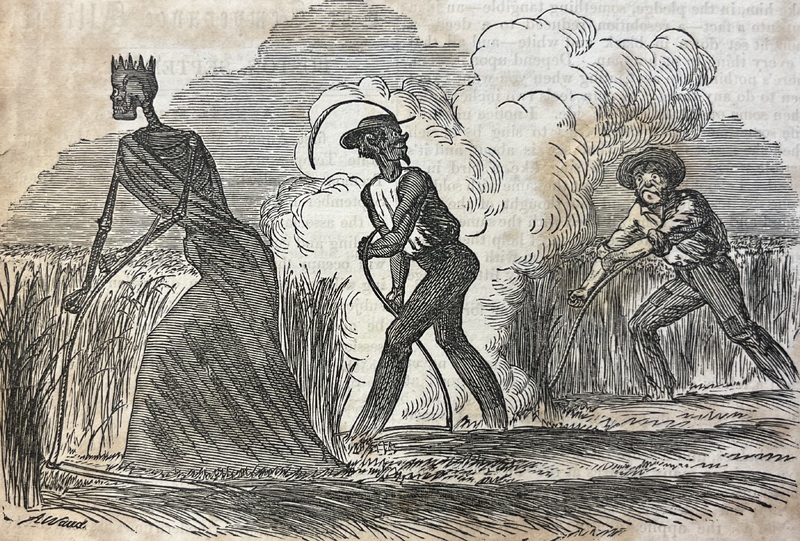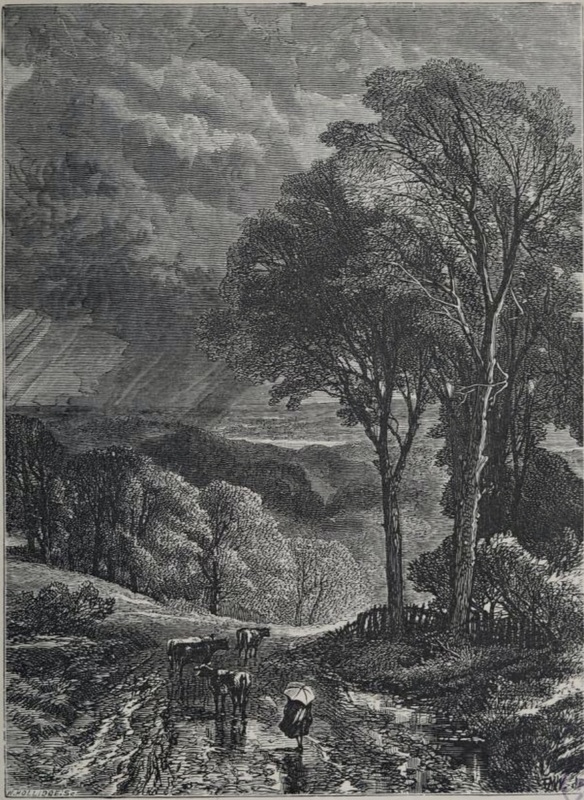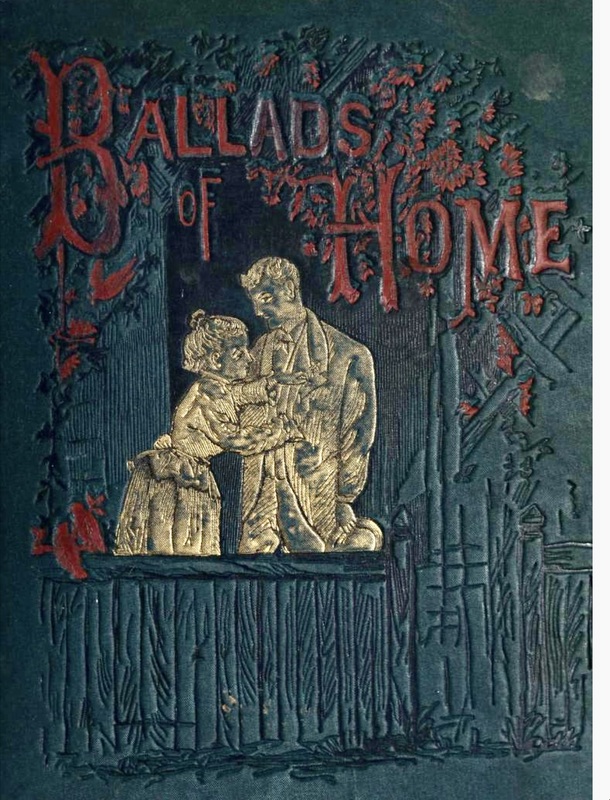Visual Settings of George Shepard Burleigh's Poems
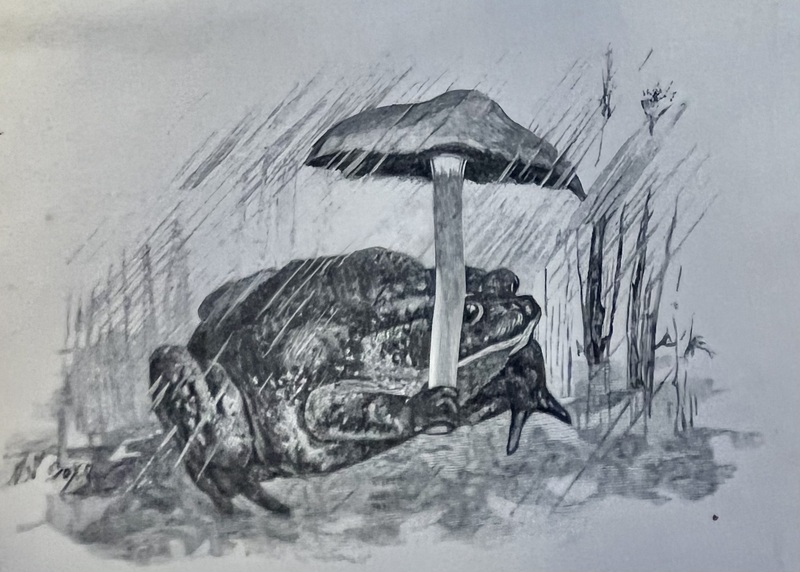
The collection The Poets of Connecticut, edited by Rev. Charles W. Everest, was first published in 1843. Both William and George Burleigh were represented in the volume, with George being the final author represented. This anthology had a long life, with new editions through the 1860s. Rev. Everest was a poet himself, some of whose hymns are still in use today.
Anticipating the great twenty-first century discovery that there is nothing people like better than looking at cats, George Shepard Burleigh had an unusually high number of poems from the second half of his career that dealt with our feline companions, especially in relation to children. The "Mummy" cat reflects the late 19th century mania for owning Egyptian artifacts.
The rich illustration of "Bird Fairies" wraps around the upper half of the poem. It features the Ruby-throated Hummingbird (Archilochus colubris) that constitutes the theme of the poem.
Regular occurences in nature - like rain, clouds, and insects - became a source of wonder for the elderly George Burleigh, mirroring their emotional valence in the lives of children. The late 19th century artists loved these ornate and sentimental evocations, and illustrated them lavishly.
The illustration almost swallows the poem in this setting of George S. Burleigh's "The Christmas Tree." This covers two pages, with the poem squeezing in among the boughs of the well-decorated tree. Individual ornaments - including an axe, a portrait, and drums - can be easily identified. The artist, though, has yet to be identified.
Among the more historically interesting poems in George Burleigh's later career is his playful presentation of a young daughter "playing" at using a telephone. The girl "calls" her mother, and mentions the need to take her doll to see the "doctor." While we have yet to trace the publication date on this poem, it is certainly among the earliest poems about the telephone. In researching this item, it emerged that Rhode Island has a large place in early telephonic history. The poem makes reference to a phone exchange; Providence's National Historic Landmark "Telephone Building" is one of the earliest elaborate examples of such an exchange. Likewise, the earliest medical emergency calls were made in Massachusetts and Rhode Island. So the poem (however one may judge its aesthetic qualities) reflects a technologically morphing world. Perhaps George Shepard Burleigh wondered how much easier his brothers' work as anti-slavery agents would have been if the telephone had been invented!
"The Marvellous Mowing-Match" is a temperance poem by George Shepard Burleigh, likely dating from 1859. The illustration shows that it is a world apart from his post-Civil War poetic tone. It partakes in some of the rollicking fun of his "The Domicile" poem, but the concluding "moral" shows its earnest dedication to what would become Prohibition. The poem also regrettably plays upon racial stereotypes of Jewish and Irish people. But the illustration remains a powerful drawing.
An 1877 publication of George Burleigh's "Water Beauties" in a collection entitled Ballds of Home shows the best and the worst of sentimentality in the art at the time. George's poem - an interesting reflection on the multidimensional blessings of water, named "Water Beauties" - is illustrated with this exquisite engraving by W. Hollidge, a noted British illustrator of the time. The cover of the volume, embossed on thick binding material, shows an older woman adjusting the suit lapel of a man (either her husband or son).
